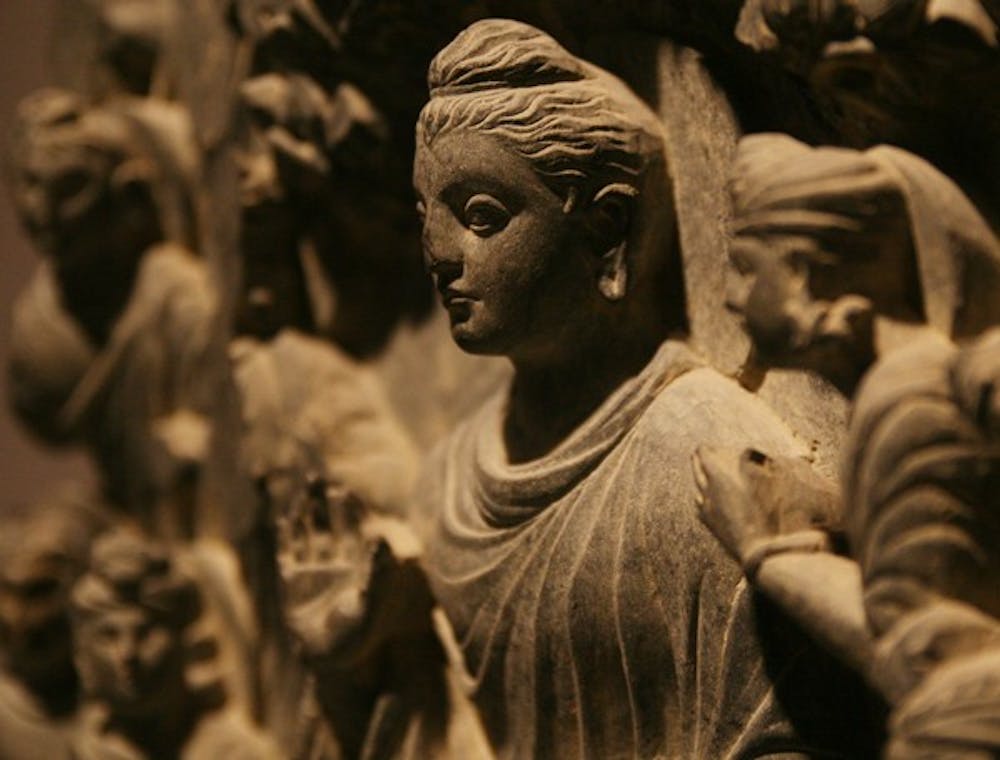Stepping into the gallery at the Ackland Art Museum, the viewer is transported through time and space to discover life and art along the Silk Road.
The Silk Road, the ancient trading route ranging throughout Asia and into Europe and the Middle East, was a major source of cultural, economic and artistic exchange.
Carolyn Allmendinger, director of academic programs for the Ackland and curator of the exhibit, said the idea for the exhibit came from conversations about ways to integrate the museum’s Asian collection with university courses.
“It’s the notion of an exhibition that can highlight the collection in a different way and involve the University community,” she said.
Members of the University community have contributed labels with additional information about specific pieces or topics. These will appear at the front of the exhibit and will change throughout.
“Over time you can see the different types of conversations that happened, even if you are not present for one of those conversations,” Allmendinger said about the additional information.
Nic Brown, director of communications for the Ackland, said they are treating the additional information like a research project for students and professors.
The exhibit is arranged into five sections that are in chronological and thematic order. It opened in December and runs through June 5, 2011.
The oldest works, from as early as the second century, show the expanse of trading at such an early time. For example, horses, which were introduced to Asia from the West, were important in Chinese art.



